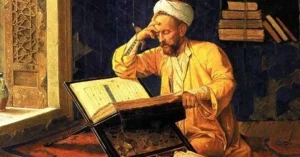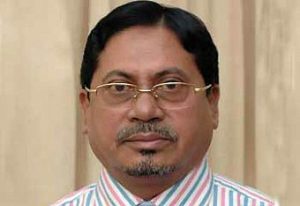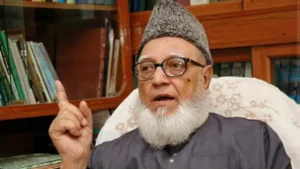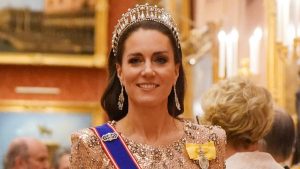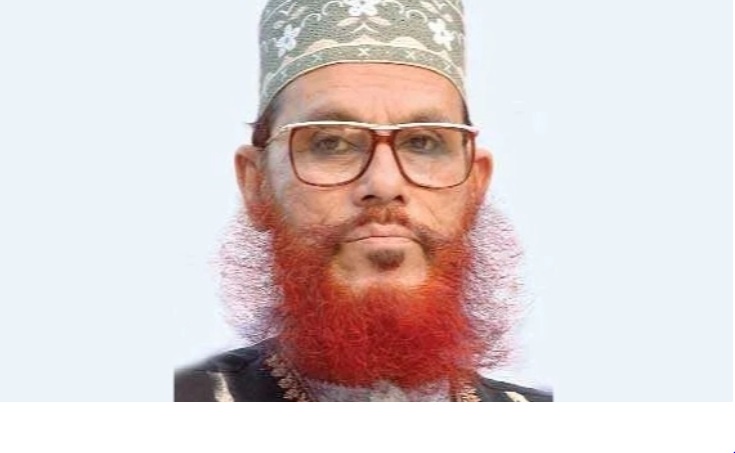
Dawah Journey and Preaching Legacy
The Unparalleled Voice of the Qur’an Across the Globe
1. Beginning of His Dawah Mission (1975–1980)
Allama Delwar Hossain Sayeedi(رحمه الله) began his public dawah journey in the mid-1970s, shortly after completing his formal Islamic studies. His first official public sermon (bayan) is recorded to have taken place in Pirojpur District in 1976, where he addressed a small village audience on the topic of “The Rights of Parents in Islam.”
“When I first stood before a crowd to speak, I trembled—not out of fear, but out of awe for the responsibility of conveying Allah’s words.” – Sayeedi (رحمه الله)
2. National Recognition Through Tafsir Mahfils (1980s–1990s)
By the early 1980s, his Tafsir Mahfils (Qur’anic exegesis gatherings) began gaining massive popularity across Bangladesh.
Key milestones during this period include:
- 1982 – Massive Tafsir gathering in Barisal, where over 20,000 people gathered
- 1986 – First major Dhaka city Tafsir Mahfil held at Baitul Mukarram National Mosque premises
- 1991 – His Tafsir gathering at Sholakia Eidgah was attended by more than 100,000 people, marking a turning point in his public fame
Delwar Hossain Sayeedi began systematically explaining the Qur’an verse by verse, combining classical Tafsir with contemporary issues, often touching on morality, politics, spirituality, and social justice.
3. Signature Style and Public Impact
His delivery style combined:
- Deep Qur’anic insight
- Real-life examples
- Emotional appeal that moved people to tears
- A powerful voice, often compared to great orators of classical Islamic history
He used to begin with the Arabic verse, translate it into Bengali, and then dive into contextual analysis, citing Hadith, classical tafasir, and modern implications.
📝 In one notable event in Chittagong (1993), the entire gathering recited surah after him in tears, overwhelmed by his explanation of Surah Al-Zalzalah. [1]
4. International Dawah Tours (1990s–2010)
Sayeedi’s dawah journey reached beyond borders. He was invited to speak in many countries, where he represented Bangladeshi Islamic scholarship:
Countries and Cities Visited:
- United Kingdom
- London (East London Mosque, Whitechapel)
- Birmingham, Manchester
- Saudi Arabia
- Jeddah, Makkah (community centers), Madinah
- United Arab Emirates
- Dubai, Sharjah
- USA & Canada
- New York, Toronto (Islamic Centers)
- Malaysia
- Kuala Lumpur (Islamic University conferences)
- India
- Kolkata, Murshidabad (Dawah conventions)
“We were amazed how a non-Arab scholar could explain Qur’anic Arabic with such depth and clarity,” – remarked an Imam from Toronto Islamic Center in 2006.
5. Memorable Tafsir Mahfils and Historic Incidents
🕌 1. Baitul Mukarram National Mosque (Dhaka):
Held annually for over a decade in the 1990s. Often drew 100,000+ attendees, filling the mosque premises and adjacent roads.
📌 These events were broadcast via loudspeakers and recorded on cassettes distributed nationwide.
🕌 2. Sholakia Eidgah Field (Kishoreganj):
One of the largest Eid congregations in South Asia. His tafsir session here is considered a historic milestone where aerial drone photography first captured the sheer size of the gathering.
🕌 3. Laldighi Maidan (Chittagong):
A prominent venue where he delivered multiple Tafsir series, especially famous was his lecture on Surah Al-Rahman, where crowds reportedly chanted “فَبِأَيِّ آلَاءِ رَبِّكُمَا تُكَذِّبَانِ” in unison.
🕌 4. Sylhet & Mymensingh Gatherings:
Massive turnouts by youth and scholars, with some Mahfils attended by non-Muslim intellectuals due to the intellectual depth and open nature of his presentations.
6. Influence on the Masses and Islamic Revival
Sayeedi’s speeches were transformative, especially for rural audiences. Reports emerged of:
- People quitting crime or addiction after listening to a single tafsir session
- Entire villages repenting and returning to regular salah and Islamic practices
- Youth taking an active role in Islamic da’wah and education
His da’wah work revived Qur’anic engagement in Bangladesh during a time when many rural and urban communities were detached from classical Islam.
During the cassette era, his tafsir cassettes sold in the millions, especially in the 1990s.
- Tafsir on Surah Yusuf, Surah Rahman, Surah Maryam, and Surah Al-Kahf were most popular
- Later, CDs, MP3s, and YouTube channels started featuring his sermons, reaching a global audience.
Footnotes & Sources [1] Eyewitness Account: “Tafsir Mahfil in Laldighi”, Alor Pothey Magazine, Vol. 12
[2] Official Archive, Jamaat-e-Islami Bangladesh
[3] “Dawah Renaissance in Bangladesh: 1980–2010”, Islamic Studies Journal, Vol. 18
[4] UK Islamic Council Report on South Asian Speakers, 2005
[5] Audio Archives of Tafsir Sessions – Baitul Mukarram, 1996–2005

